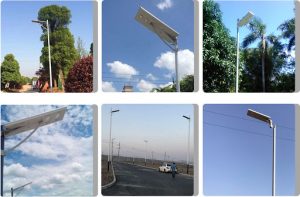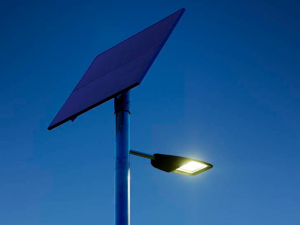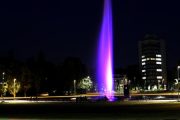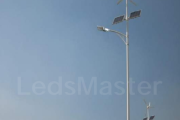The world is now shifting towards the use of renewable energy.
The need to conserve the environment and the high cost of other sources of energy are just some of the reasons behind this push.
Solar energy is one of the most popular sources of renewable energy. It has a wide range of application both in the commercial and business premises.
One application area of solar energy is in street lighting.
This energy is used to power a wide range of streetlights. Private residential areas and public institutions are depending on solar energy to illuminate their streets.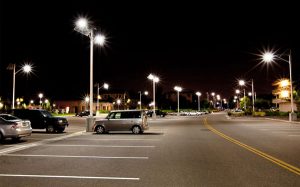
Outdoor solar lights vs regular outdoor lights
Why would you choose solar outdoor lights over regular outdoor lights?
Solar lighting has many advantages over regular outdoor lighting. Being solar powered means you can charge them up largely for free, and the recent developments solar technology are now sophisticated enough to hold their charge for long periods with light to regular use. Most modern solar lights have very efficient photo voltaic cells (the cells of a solar battery where power is stored) and improved circuits to help your lights store and use their energy only when they need it.
This is an important factor for outdoor lights which are used all year round, particularly on short winter days when there is less time for your lights to charge up. Another great advantage of solar outdoor lighting – no need to worry about running ugly cables around your backyard or down the side of your house to keep your lights running.
Common application areas of Solar street lighting:
Some of the areas where you are likely to find solar street lights include but not limited to:
Public street lighting
Park lighting
Roadway lighting
Dock lighting
Fence lighting
Sidewalk lighting
Farm and ranch lighting
Perimeter security lighting
solar street lights residential
How solar lighting works.?
Photovoltaic cells absorb sunlight during the day to charge the batteries, which then light the bulb at night. Because solar lights are powered by the sun, they must be placed in an area that receives full sun — ideally eight or more hours per day.
What if you don’t have direct sun?
If you are putting solar lights in your desert yard in Tucscon or Palm Springs, they are sure to operate at maximum strength — but what if you live in Seattle or simply have a heavily shaded yard? It’s not quite as simple, but you can still have solar-powered lights, even in a fully shaded area. A solar or landscape lighting pro can help position a remote photovoltaic panel on your roof or in a sunnier area of your yard, which can then be wired to the lights in the shady area.
Factors to consider before buying solar street lights:
Here are several points that you should consider to choose the best solar street lights:
1 HID lights vs LED lights?
Traditionally most streets were lit with high intensity discharge(HID) lights. The HID metal halide lamps commonly used consist of an arc tube(burner), outer envelope(bulb), and a starting gas. The ballast supplies the ceramic or quartz arc tube with voltage which in turn begins ionizing the gas(usually argon, mercury, and metal halide salts).
As temperature and pressure increase within the bulb, materials in the arc tube vaporize emitting light and UV radiation. These lights are very bright but must be replaced every few years and are energy inefficient. These are not a viable solar option.
Light emitting diodes(LEDs) use tiny microchips to produce visible light in the diode. This method of light production is very efficient and the “bulbs” don’t burn out like conventional light fixtures. LEDs instead experience lumen degradation, slowly dimming over time.
However this is a very slow process and you wouldn’t need to replace your LEDs for many years after installation.
2 Lighting efficacy
A lighting efficacy rating is measured in lumens per watt(lm/w). This rating is important as it will show you how much light is generated compared to energy consumed. It is simply total light output(lumens) divided by input power(watts). High lumen solar lights are not always the best and you should pay attention to how well the luminaire focuses its light.
3 Illumination levels
The Illuminating Engineering Society of North America(IES) has recommended light levels you can check out for different lighting applications. Recommended amounts are prescribed in footcandles(fc) which are the basic measurement for light falling on a surface. Measurements can be taken with a handheld light detector. A 4:1 (bright/dark) ratio between the brightest and darkest area is considered a good minimum but a 3:1 ratio is better.
Footcandles matter more than lumens when considering street lights as they tell you how much illumination the floor is actually receiving. Color temperature, measured in degrees kelvin, is also important to consider.
4 PIR motion sensor
A passive infrared sensor(PIR) is included on many solar street lights to help conserve battery life. All objects with a temperature above absolute zero emit infrared radiation from heat energy. These sensors work by measuring this infrared light allowing the sensor to detect movement.
5 Solar and battery storage
Solar street lights use the energy from the sun, collected by photovoltaic cells, to store electricity in a battery which is later used for your lighting needs. Look for a solar panel and battery combination that offers a large milliampere hour(mAh) capacity. Check the ratio between the solar panel and battery while looking at luminaire energy draw. Ensure the panel is sufficient to charge the battery and the battery has enough capacity to run the light for multiple hours.
There are many things to consider when buying street lights, if you have any questions, please contact us. All in all, you get what you pay for. The brightness of a solar light depends on the brightness of the sun and the amount of daylight it is exposed to — but it also depends on the quality of the photovoltaic cells and the size of the LED bulb. Higher-quality photovoltaic cells and larger LED bulbs tend to cost more, so to a certain extent, the higher-priced solar lights do tend to shine more brightly.


